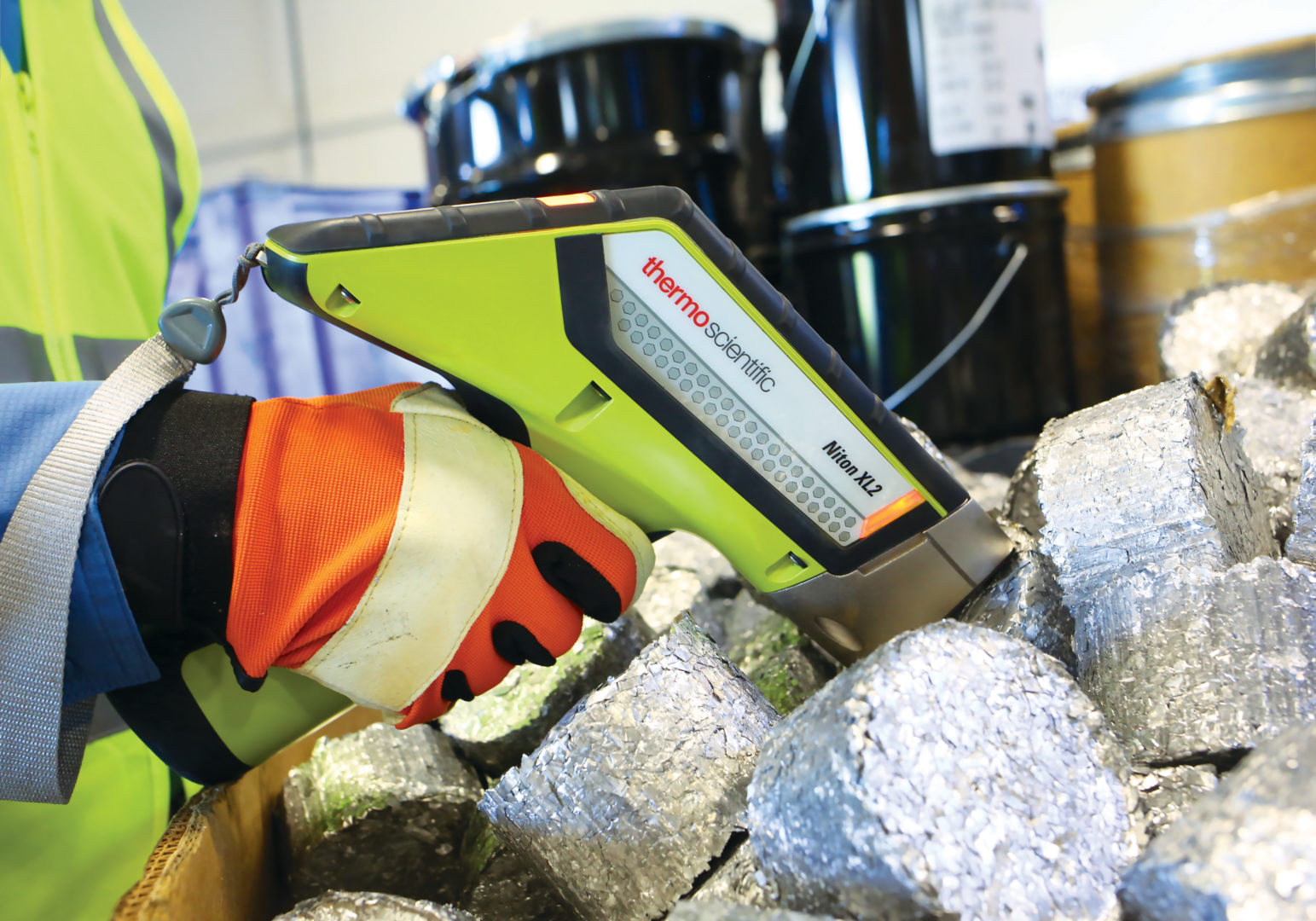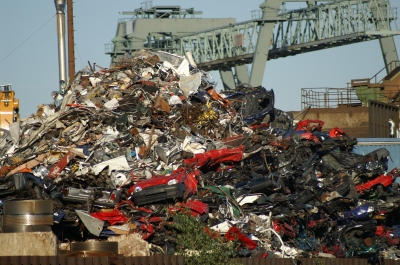Without it, a scrap yard is jeopardizing its good reputation, as well as its profits, sales and customers. For Matthew Applebaum, Vice President of Framingham Salvage Company in Framingham, MA, those are risks he’s simply not going to take. “Sorting is very important because we need to guarantee that the material we are shipping to consumers is what we say it is,” Matthew explains. “If it isn’t, the mill or foundry we’re shipping to could reject the load or downgrade it, and that would hurt our reputation—and our bottom line.”

Years ago, manufacturers produced fewer varieties of metal, and nearly all of what was recycled came from local sources. That made sorting scrap much less complicated than it is today. But the process was time-consuming and cumbersome. Matthew remembers how his grandfather Cyril Applebaum, who founded Framingham Salvage Company in 1965, would use a grinding wheel to conduct spark tests, identifying ferrous metals by the color, pattern and length of the sparks they produced. Cyril also used a variety of chemical analyses, such as detecting copper with a drop of nitric acid, which would cause a tell-tale bluish hue to appear.
Tests like those are now obsolete. These days, elemental analyses are performed with hand-held devices that use X-rays and/or lasers to detect not only pure metals and alloys, but also tramp elements and other contaminants. These devices can come equipped with intuitive, smart technology, and they make sorting efficient, effective and fast—identifying the chemical composition of most scrap material in just a few seconds.
“As the metal recycling industry continues to evolve, we have to constantly improve what we do,” Matthew says. “That’s why we count on partners like Thermo Fisher Scientific. Their hand-held analyzers are keeping pace as the industry changes, and that helps us to continue to grow and better serve our customers.”
Here are other ways Matthew has seen scrap metal sorting evolve, since he started working full-time at the family business back in 2003:
- Salvage companies are carving out niche markets. Metal recycling is a growing industry, and the most successful scrap yards make it a point to differentiate themselves from their competitors. For instance, Framingham Salvage started out buying scrap metal almost exclusively from plumbers, electricians and other tradesmen. But over the years, the company has expanded its customer base to include a wide range of industrial manufacturing accounts. Matthew’s father, David, who is now the President of Framingham Salvage, drove this shift towards what he calls “boutique-y” scrap and today, the company processes millions of pounds of metal annually, most of it the by-products of niche manufacturing clientele, such as punching and stamping companies and companies that deal with high-temperature alloys.
- Distinguishing between subtle compositional differences is vital to maximizing profits and minimizing risks. For decades, salvage yards depended on rudimentary assessments like the “magnet test” which, as the name implies, involved applying a magnet to a piece of scrap metal. If the magnet stuck, the scrap was classified as steel; if it didn’t, it was classified as stainless steel. But now there are 15 different types of commonly used stainless steel—and as many as 150 types of stainless steel overall—and the magnet test simply cannot provide the level of detail that’s required to efficiently sort it.
“The different types of stainless might look the same, feel the same, smell the same, taste the same, and react to a magnet in the same way,” Matthew says. “But they can differ in the amount of chrome (or nickel) they contain—and that affects their value.” At first, the difference in price, which is typically about a few cents per pound, may not seem like much. But, as Matthew explains, when you are shipping truckloads of metals that weigh 45,000 pounds each, those “few cents” can add up quickly!
Framingham Salvage relies on the technology in Thermo Fisher Scientific’s hand-held analyzers to help them accurately identify the scrap that’s brought to their yard. The data generated by the metal analyzers also prevents material mix-ups that could lead to incorrect weld chemistry and dilution, or even counterfeit materials entering the manufacturing process. - Volatility is a new constant. Because metals are commodities, their value can fluctuate day to day, and sometimes even hour to hour. This volatility has been particularly pronounced lately, as tariffs and other aspects of the global economy continue to impact imports, exports, manufacturing and consumption. To adapt, Framingham Salvage has begun to develop new trading and risk management practices designed to help protect the company from extreme fluctuations in global market pricing. Accurate sorting can help as well, allowing Matthew and his team to know with certainty the composition of the materials they have on site.
- The pressure to verify is mounting—for both buyers and sellers. Analysts predict the metal salvage industry will become increasingly challenging as manufacturers continue to add recycled materials to their fabrication processes. Already, globalized trade in scrap metal, alloy stock and finished products means many varieties of metal are entering scrap yards, often from unknown sources. And even when there is documentation about the source and composition, it is not uncommon for scrap to be mislabeled or misidentified, Matthew says. At Framingham Salvage, the crew uses Thermo Fisher Scientific’s Niton Handheld XRF Analyzers to test the scrap and provide alloy identification. If a discrepancy arises, a customer can be contacted immediately with data verifying the actual composition of their scrap.
Despite all that has changed, and is changing in the metal recycling industry, Matthew maintains that some aspects of the family business will always remain the same. Since 1965, Framingham Salvage has built their reputation around conducting business with integrity, responsibility and concern for the environment, while providing maximum value to customers and creating a safe workplace for employees. As Matthew sees it, the technology in Thermo Fisher Scientific’s metal analyzers supports all aspects of that mission.
“Evolving is part of our family business. We know that we have to continue to improve,” he concludes. “We feel that Thermo Fisher Scientific is part of our family business. They’re part of our family because they’re always trying to improve, and so are we. We’re working together, and it’s been a great partnership. We trust that they are going to continue to offer the best technology that’s out in the marketplace, and we are going to continue to support that because it supports our business and our customers.”











